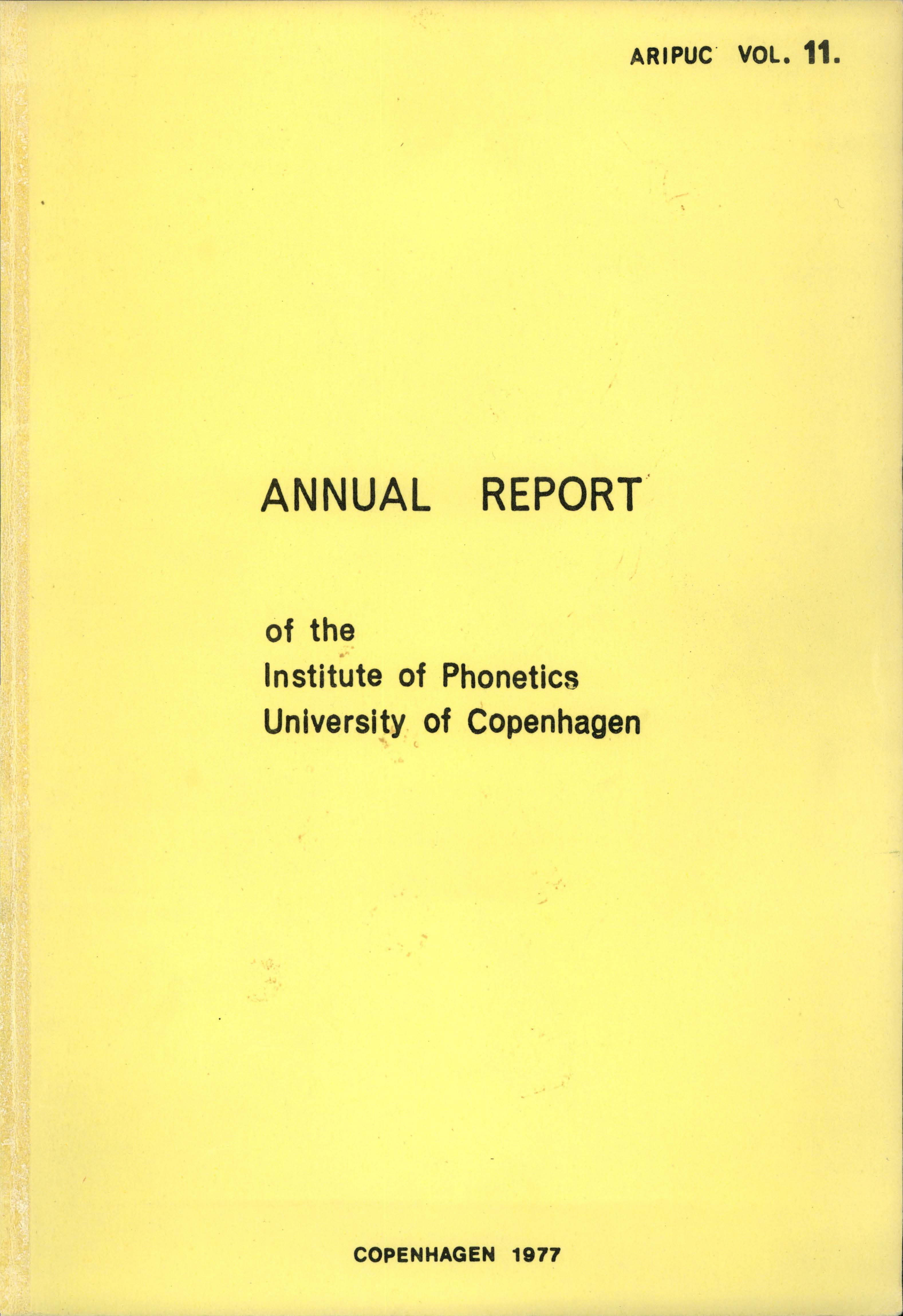Retroflex and dental consonants in Gujarati. A palatographic and acoustic study
DOI:
https://doi.org/10.7146/aripuc.v11i.131664Abstract
A palatographic investigation of dental and retroflex consonants of one Gujarati speaker shows the point of articulation of the retroflex consonants to be mostly prepalatal. The main result of the acoustic investigation which is based on one more informant is that retroflex consonants (compared to dental consonants) have a lowering effect on the transitions of F3 and F4 of the preceding vowel (though the effect on i and e is very small), whereas the influence on the following vowel is irregular, but clear for the vowel a. In addition, the burst of retroflex stops shows concentration of energy at a lower frequency than dental stops. The important contribution by Stevens and Blumstein is discussed in the final section.
Downloads
Published
How to Cite
Issue
Section
License
Copyright holder author

